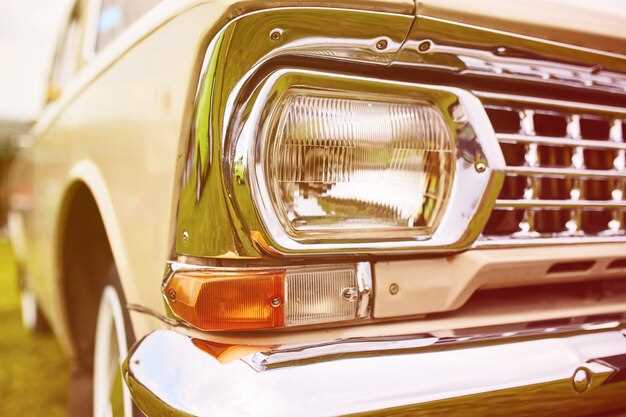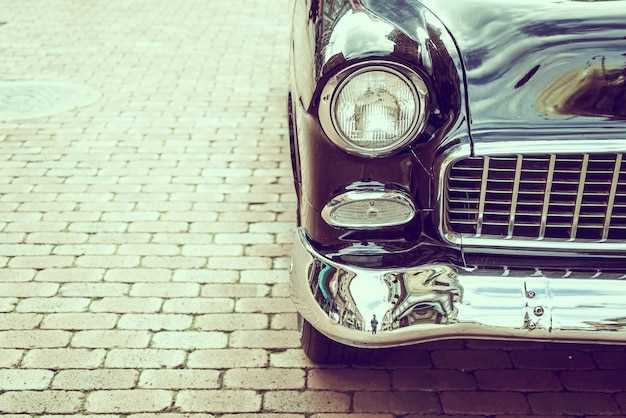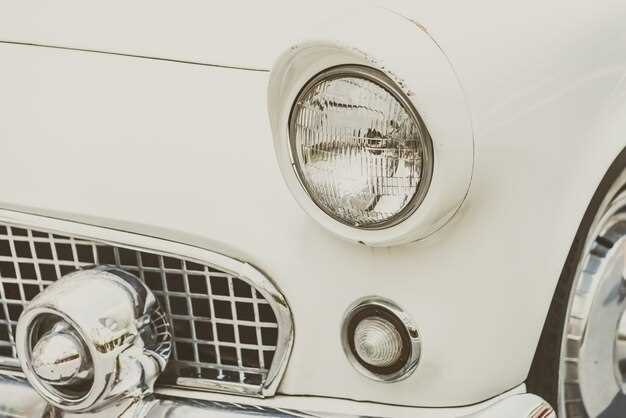Consider adding classic cars to your investment portfolio–they often appreciate in value, outperforming traditional assets like stocks and bonds. Over the last decade, certain models from brands such as Ferrari, Porsche, and Aston Martin have seen value increases of up to 200%. This asset class not only offers potential financial returns but also the enjoyment of owning a piece of automotive history.
Classic cars attract a dedicated community of enthusiasts; brands that are well-maintained and kept in pristine condition frequently command higher prices. Acquire vehicles with excellent provenance and limited production numbers to maximize your investment. Vehicles with a strong track record at auctions, such as the 1962 Ferrari 250 GTO, exemplify how rarity and historical significance can lead to extraordinary market demand.
Ownership of classic cars also allows for tangible benefits. Whether it’s the thrill of driving or the camaraderie at car shows, these vehicles provide a unique experience that isn’t found with typical investments. Moreover, classic car insurance policies can be more affordable than standard auto insurance, especially when the car is stored safely and driven infrequently.
Incorporating classic cars into your investment strategy offers both financial potential and an engaging hobby. With careful research and a keen eye for valuable models, you can enjoy the thrill of classic car ownership while potentially securing a lucrative investment.
Understanding Market Trends in Classic Cars
Monitor auction results regularly to identify which classic cars are appreciating. Look for auction houses like RM Sotheby’s and Gooding & Co., where notable sales take place.
Evaluate the popularity of specific makes and models. Research top-selling brands such as Porsche, Ferrari, and Jaguar, as well as emerging interests in lesser-known vehicles. Check online forums and classic car clubs for discussions highlighting these trends.
Track historical price data over the years. Websites like Hagerty and NADA Guides provide valuable insights into market fluctuations, allowing investors to spot patterns in pricing.
Consider external factors that influence the classic car market. Economic conditions, disposable income levels, and changes in consumer preferences can significantly impact performance. Stay informed about how these factors shape buyer behavior.
- Monitor social media and classic car events. Engagement on platforms like Instagram and Facebook can indicate trends.
- Network with other collectors and enthusiasts to gain first-hand insights about potential investment opportunities.
- Stay updated on regulatory changes regarding vintage cars, as new emissions laws or import tariffs can affect market dynamics.
Focus on rare limited editions; these have a high likelihood of appreciating due to their scarcity. Research the production numbers of specific models and their historical significance.
Evaluate restoration trends. Original, unrestored vehicles often command higher prices than restored ones, especially among purists. Conversely, high-quality restorations can enhance value if performed correctly.
Finally, invest in cars with a strong provenance. Documentation of ownership history can significantly enhance a vehicle’s desirability and value in the marketplace.
Identifying High-Value Models and Brands
Focus on classic cars that demonstrate a proven track record of appreciation and demand among collectors. Look for specific models and brands renowned for their history, design, and scarcity.
- Ferrari: Models like the 250 GTO and the F40 have consistently commanded high prices at auctions. Their racing pedigree and limited production numbers attract serious investors.
- Porsche: The 911 series, particularly the vintage models from the 1960s and 1970s, has seen significant value increases. The air-cooled versions are especially sought after.
- Jaguar: The E-Type is a classic example with a legacy that appeals to buyers. Original and well-maintained models perform well in the market.
- Mercedes-Benz: Classics like the 300SL Gullwing and the Pagoda models (like the W113) have shown remarkable appreciation and often attract enthusiastic collectors.
- Ford: The Mustang, particularly the early models from the 1960s, still has a strong fan base and a robust market for well-preserved examples.
Additionally, consider the following factors when identifying high-value models:
- Limited production: Cars produced in smaller numbers tend to hold more value due to their rarity.
- Provenance: A model with a notable history or celebrity ownership often garners higher prices.
- Condition: Well-maintained and original vehicles attract higher bids; restorations should be documented and ideally, performed at a high standard.
- Market trends: Keep an eye on auction results and sales trends within the classic car community to identify rising stars.
By focusing on these models and attributes, investors can secure classic cars that are more likely to appreciate over time, enhancing both financial returns and enjoyment.
Evaluating Maintenance Costs vs. Potential Returns
Consider classic cars as an investment, not just a hobby. Calculate potential maintenance costs accurately to inform your buying decisions. Regular servicing, parts replacement, and insurance present expenses that can impact your overall returns.
Establish a budget for both immediate and long-term maintenance. Certain models, depending on their rarity and condition, can command higher upkeep costs. For instance, vintage European cars often require specialized parts and expertise, which can escalate expenses.
On the flip side, evaluate potential appreciation. Certain classic cars, such as the Ford Mustang or Porsche 911, have shown substantial value increases over the years. Research market trends for similar models to predict future returns.
| Car Model | Average Annual Maintenance Costs | Estimated 10-Year Appreciation |
|---|---|---|
| Ford Mustang | $1,200 | 50% |
| Porsche 911 | $1,500 | 70% |
| Chevrolet Corvette | $1,000 | 60% |
Factor in your investment horizon. Classic cars can appreciate significantly over time, offsetting maintenance costs. If you plan to hold the vehicle for several years, the potential returns can justify the maintenance investments made.
Negotiate for classic cars with a known history. Vehicles with fewer mechanical issues typically offer lower maintenance costs. Conduct thorough inspections before purchase to avoid unexpected expenses that can diminish returns.
Ultimately, aligning anticipated maintenance costs with probable appreciation will inform smarter investment decisions in the classic car market.
Exploring Storage and Preservation Options for Investment
Choose a climate-controlled storage facility to protect your classic car from temperature fluctuations and humidity. Aim for a stable environment between 60°F and 75°F with humidity levels around 30-50%. This will prevent rust, mold, and deterioration of internal parts.
Invest in a quality car cover designed specifically for your model. A breathable, soft cover will shield your vehicle from dust and scratches while allowing moisture to escape. Avoid cheap tarps that trap moisture and can cause paint damage.
Regular maintenance is key. Check the fluid levels every few months and run the engine periodically to keep the seals lubricated. This practice can help prevent issues that arise from inactivity.
Store your car with the fuel tank full to minimize condensation. Add a fuel stabilizer to prolong the life of the gasoline and prevent it from breaking down. Inflate the tires to the recommended pressure to avoid flat spots during long-term storage.
Consider using a battery maintainer to keep the battery charged. This prevents the battery from dying and prolongs its lifespan. Disconnecting the battery is another option if you aren’t frequently checking on the car.
Keep an eye on pest control. Rodents can cause significant damage by chewing through wires and upholstery. Use traps and repellents around the storage area to deter them from making your car their home.
Document your car’s condition with photos and notes. Regularly capture images and note any changes in the vehicle’s state. This can assist in maintaining value and help when it’s time to sell.
Participate in classic car clubs or forums to share preservation strategies and stay updated on best practices. Engaging with other enthusiasts provides insights and support for maintaining your investment.
Leveraging Tax Benefits and Incentives for Classic Car Owners
Classic car owners can take advantage of various tax benefits that enhance their investment. Start by considering the capital gains tax. If you hold your classic car for more than a year, any profit from its sale may qualify for long-term capital gains rates, which are typically lower than ordinary income tax rates.
Many states offer tax incentives for classic car collectors, including lower property tax assessments. Research your local laws, as some jurisdictions classify classic cars as luxury items, allowing for reduced rates. Make sure to document your car’s value through appraisals to benefit from these lower assessments.
Track expenses related to your classic car, such as maintenance, restoration, and storage. These costs may be deductible if you use the car for business purposes, such as advertising or promotions. Keep thorough records of all related expenses to substantiate your deductions come tax time.
Investing in classic cars may also qualify you for certain tax credits or deductions depending on modifications made to enhance fuel efficiency or reduce emissions. Some states may support eco-friendly upgrades to classic vehicles with financial incentives.
Consider joining classic car clubs or organizations that may offer exclusive benefits, including tax advice specific to your situation. Networking within these communities can provide valuable insights on maximizing your tax position as a classic car owner.
Connecting with Communities and Resources for Classic Car Enthusiasts
Join classic car clubs in your area to meet like-minded individuals and share experiences. These clubs often organize events, gatherings, and workshops that enhance your knowledge and appreciation for vintage vehicles.
Utilize online forums such as ClassicCars.com or Hemmings, which offer a platform for discussions, restoration tips, and advice on buying or selling. Engaging with these communities can lead to valuable insights and relationships.
Attend classic car shows and auctions. These events not only showcase stunning vehicles but also provide opportunities to network with owners, collectors, and experts. You may find potential investments or resources for your own restoration projects.
Leverage social media platforms like Facebook and Instagram, where numerous groups and pages dedicated to classic cars exist. Follow prominent influencers in the classic car space to stay updated on trends, tips, and upcoming events.
Subscribe to magazines such as Car and Driver or Classic & Sportscar. They offer articles, reviews, and key details that keep enthusiasts informed about market shifts and noteworthy cars to consider for investment.
Connect with local restoration shops that specialize in classic vehicles. Building relationships with skilled mechanics can help you understand maintenance needs and potentially lower restoration costs.
Network with insurance agents experienced in classic car valuation. They can offer tailored policies that protect your investment while providing insights into market value and trends.






